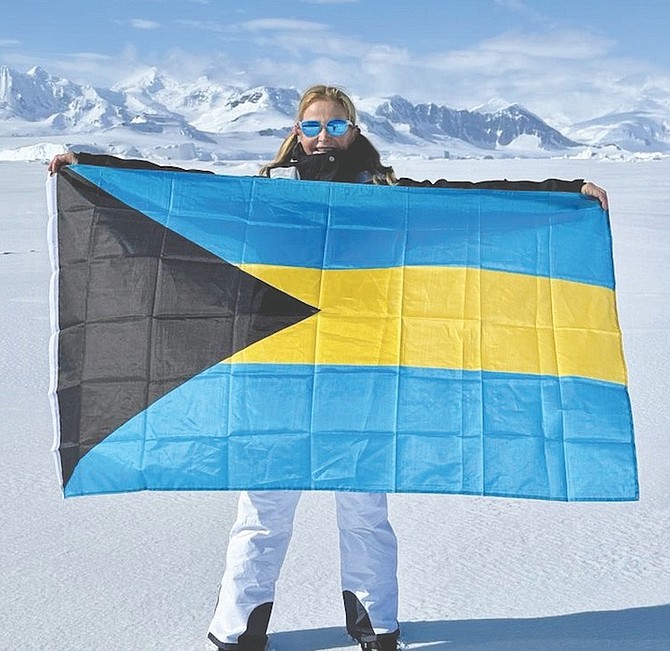By EARYEL BOWLEG
Tribune Staff Reporter
ebowleg@tribunemedia.net
FINA Johnson’s love of travelling, adventure and animals has helped her become one of the 170,000 people a year to visit the world’s most isolated continent: Antarctica.
The George Town Primary School alumnus lives in Exuma, where she rescues dogs with Fina Fosters, a rescue group, but she is currently on a 13-day trip in Antarctica.
She told The Tribune the journey began in Ushuaia, Argentina, on the Scenic Eclipse One, a discovery cruise with 196 people.
On the way to Antarctica, the ship took two days crossing the Drake Passage, which she calls “one of the most dangerous in the world” to encounter by boat “because three different oceans collide: the Pacific, the Atlantic, and the Southern Ocean.”
“We were lucky we had medium seas, which was still pretty rough, but the Eclipse two, which was a day and a half behind us, had to ride out a storm,” she said.
She said activities in Antarctica have included Kodiak trips twice a day and helicopter and submersible trips.
She said it was not difficult preparing for the trip.
“You just need to read up on it,” she said.
Her main goal is to see as much wildlife as possible and learn more about that under-explored area of the world.
“We have a discovery team on board, and we have lectures and talks every day about everything we are seeing, from rocks and ice to seals and whales,” she said.
“We are kayaking, hiking, paddle boarding, and exploring with zodiacs, noting the different wildlife that we see. This helps other scientists with their data.”
“We’ve gone to two abandoned scientist huts.”
“We did a Kodiak trip this morning. After walking on the ice, we saw a leopard seal and a crab eating a seal (and) a juvenile emperor penguin amongst many seabirds.”





Comments
GodSpeed 3 months, 2 weeks ago
very cool
Baha10 3 months, 2 weeks ago
👏 👏 👏
zemilou 3 months, 2 weeks ago
From https://theconversation.com/more-than...">https://theconversation.com/more-than...
"In areas visited most by tourists, the snow has a higher concentration of black carbon from ship exhaust, which soaks up more heat and leads to snow melt. Ship traffic also risks carrying hitchhiking invasive species into the Southern Ocean’s vulnerable marine ecosystems.
"That’s to say nothing of greenhouse gas emissions. Because of the continent’s remoteness, tourists visiting Antarctica have a higher per capita carbon footprint than other cruise-ship travellers."
Sign in to comment
Or login with:
OpenID